In a colder climate? Electric heater for garage...a clean, safe alternative
#1
Tech Contributor
Thread Starter
Member Since: Aug 1999
Location: Should this thoughtful, valuable contribution meet with no acknowledgement or 'thanks' this post----
Posts: 16,382
Received 399 Likes
on
257 Posts

Ok, I had several people pm me about the electric heaters I use in my 3-car garage during winter storage. So, I thought I should post up a separate thread to handle the requests from the recent thread.
Just a little background from a lot of research I did before deciding which heat source to go with. Mainly, I wanted the safest, most cost effective, easy to install heat source. Bottom line, I ended up with electric heaters, two, one at each end of the garage. Here is one of them...note the size is only about a cubic foot...
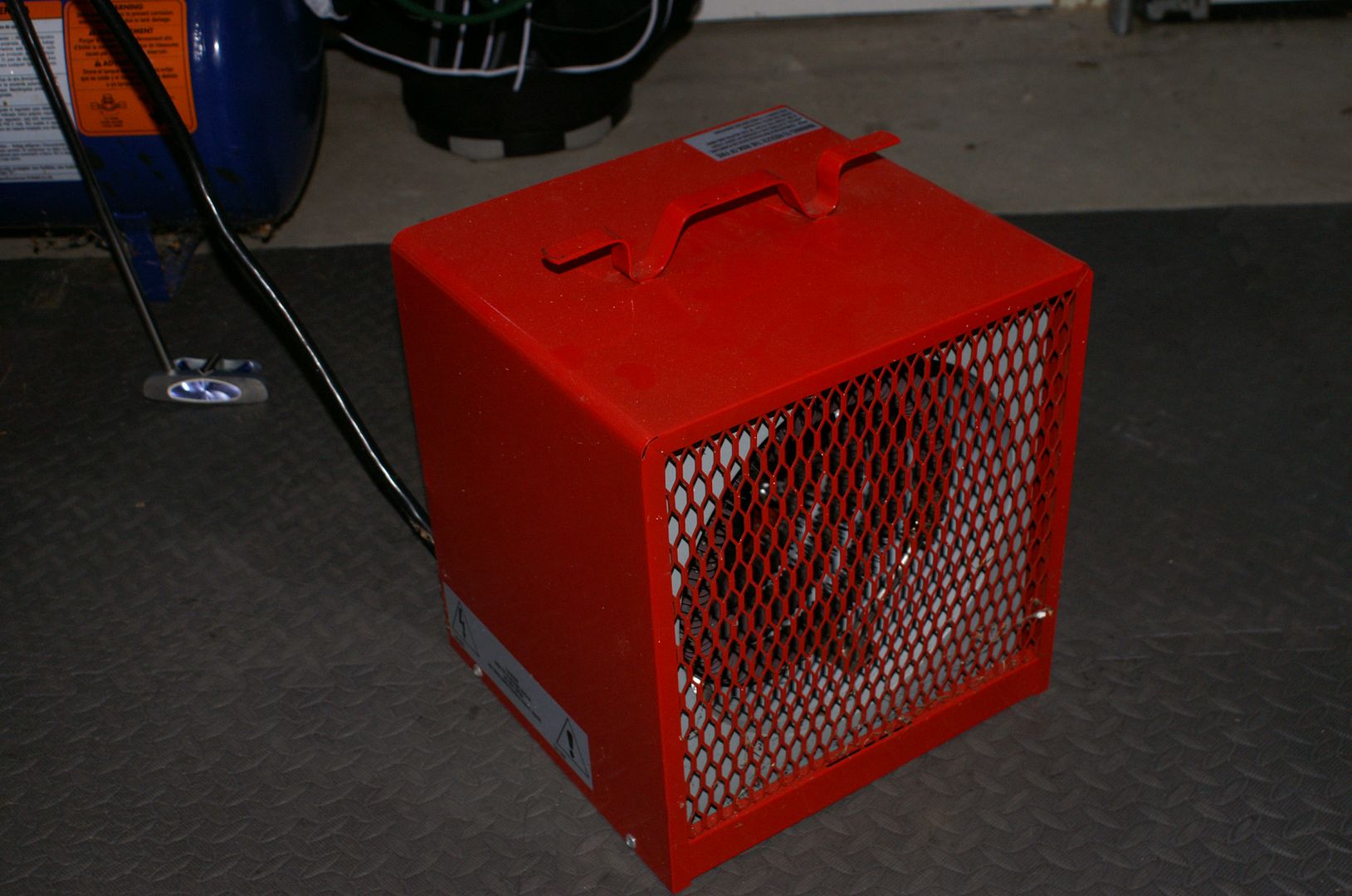
The beauty of this approach is there is no plumbing in of a 6" vent (I didn't want to cut a big hole in my garage); no fumes, no running out of fuel, no storage of fuel, no leaving a door open while heating, small size, and movable/adjustable. Also, I have the option of running just one heater if that's all I need. Furthermore, these heaters sport a built-in T-stat, and can operate as a cooling fan in the summer. The only real task is installing the 10-2 electrical lines and outlets. Each unit requires a 'home run' back to the electrical box main in the house. A home run is nothing more than a dedicated line from the appliance back to the box...no other devices on the circuit to draw electricity. These are 240v units, and that is what you will need if you want excellent heat output. There little guys put out just under 20000 BTUs each. There are no 110v units out there that can match that output. Thus the need for adding the 10-2 wiring.
Each situation is different, of course, but I can show you a few of the things I had to do to get the wire from the garage to the basement. I used up nearly an entire 250' roll of wire, and it' s very stiff at this gage, meaning hard to pull around corners, etc.
From the far end of the garage (up above the ceiling, then down here to meet the second heater wiring)....
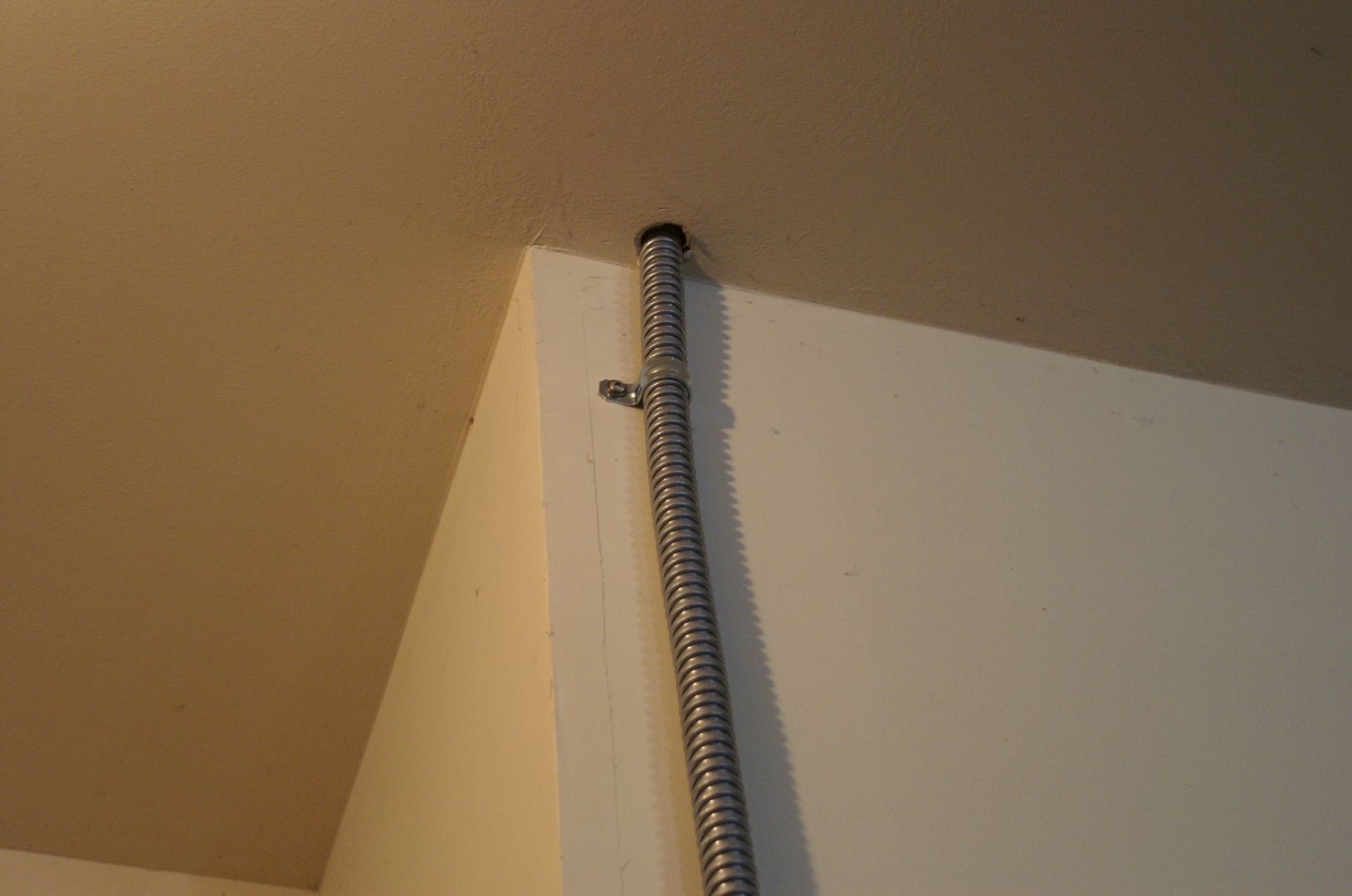
Entering the house below the main floor....

Through the joists, then under an engineered beam, I didn't want to drill a hole in the beam, probably would not have made a difference, but that was my choice. It's the orange wire.
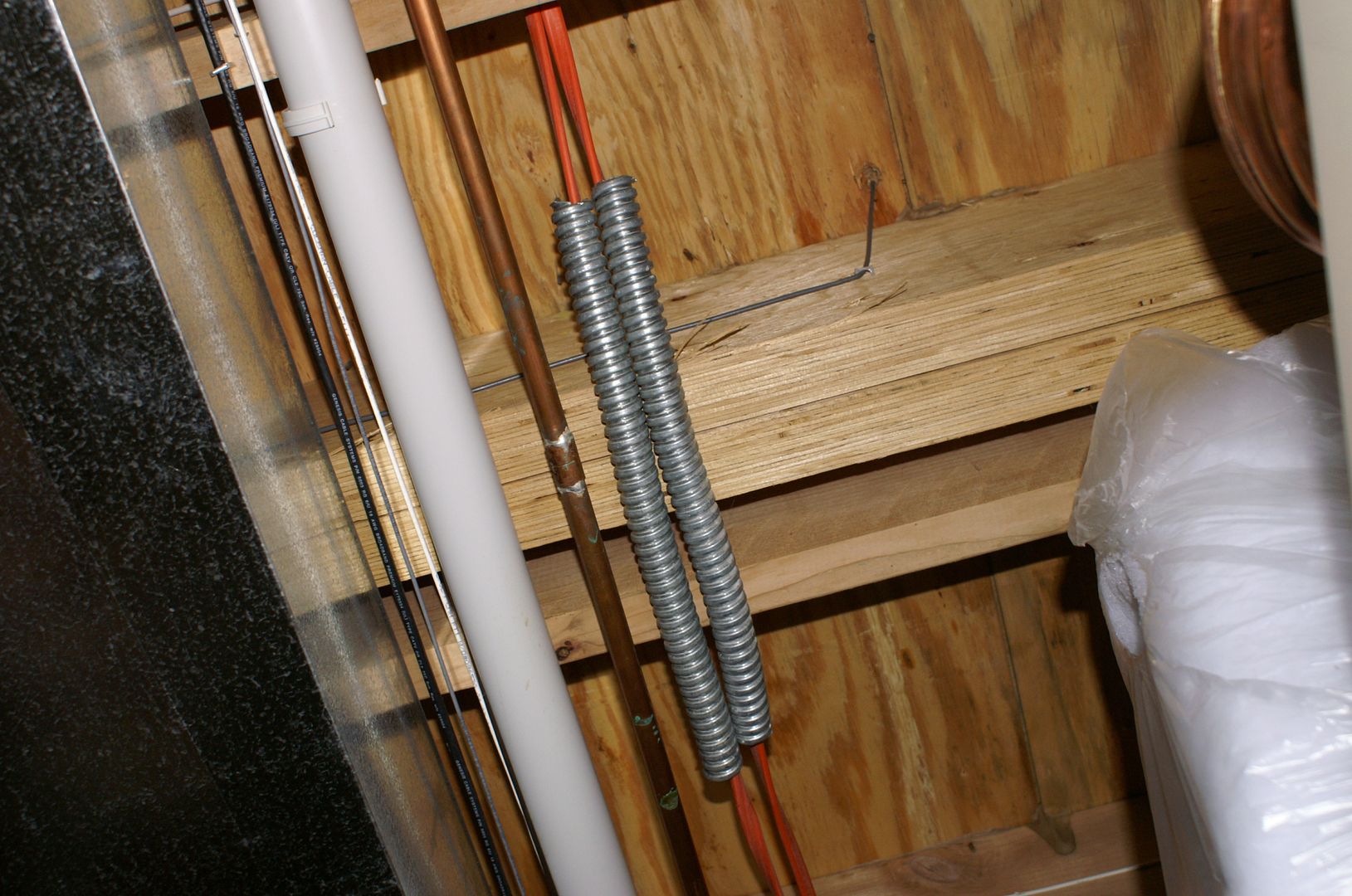
Finally terminating above the box and completing the circuits.
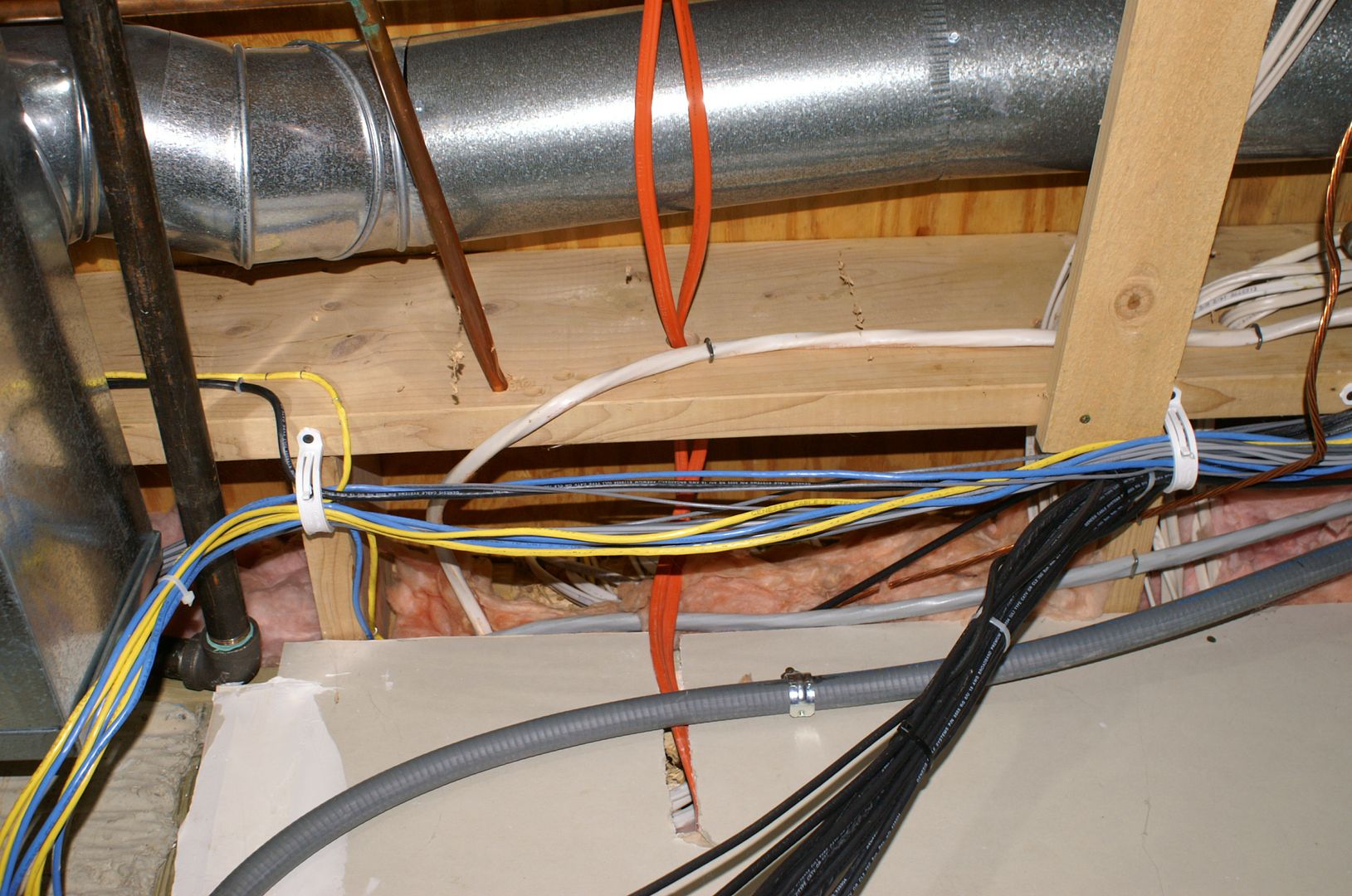
Labeled them East and West circuits...
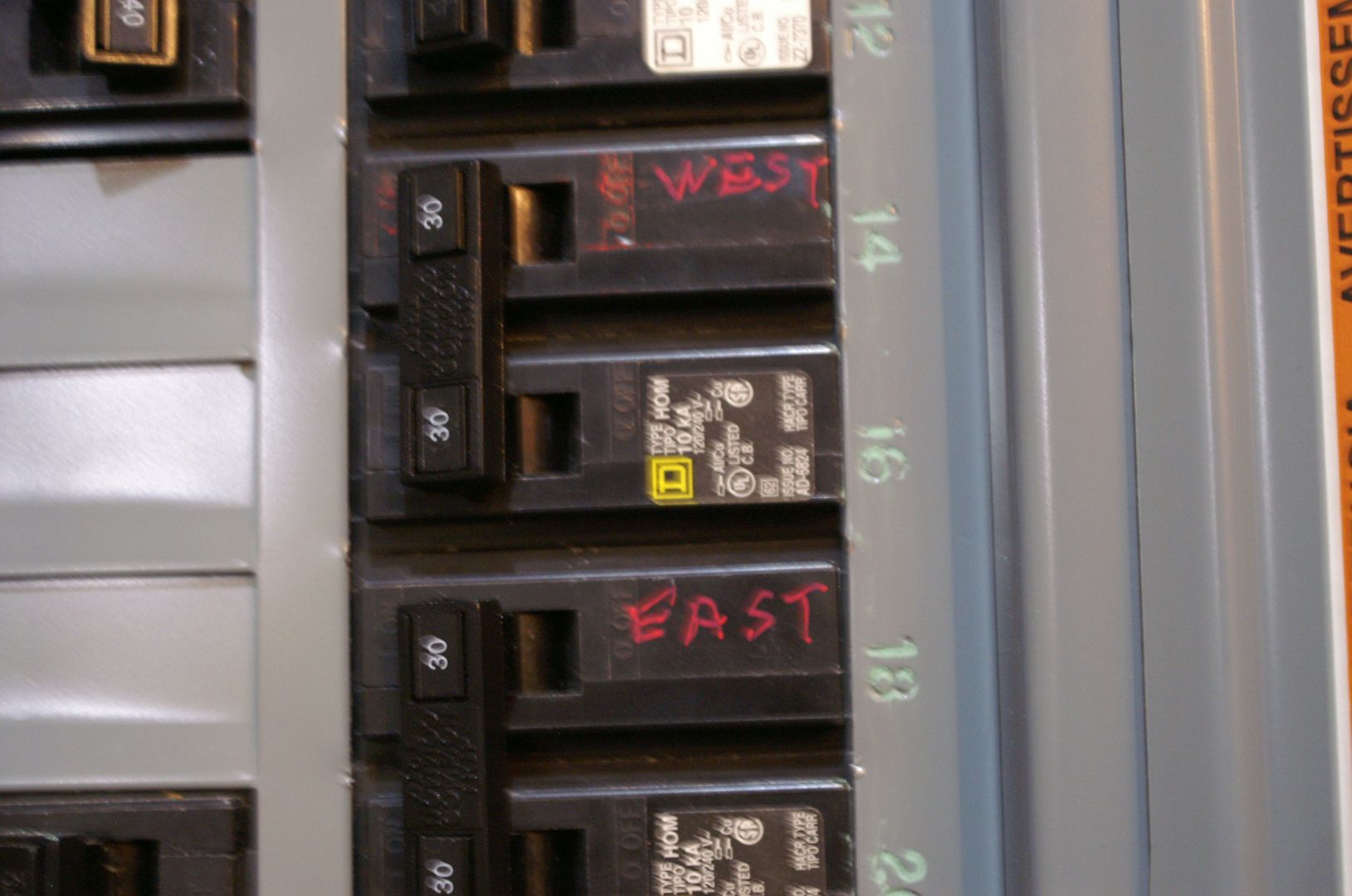
Larger wire requires huge plugs and sockets:
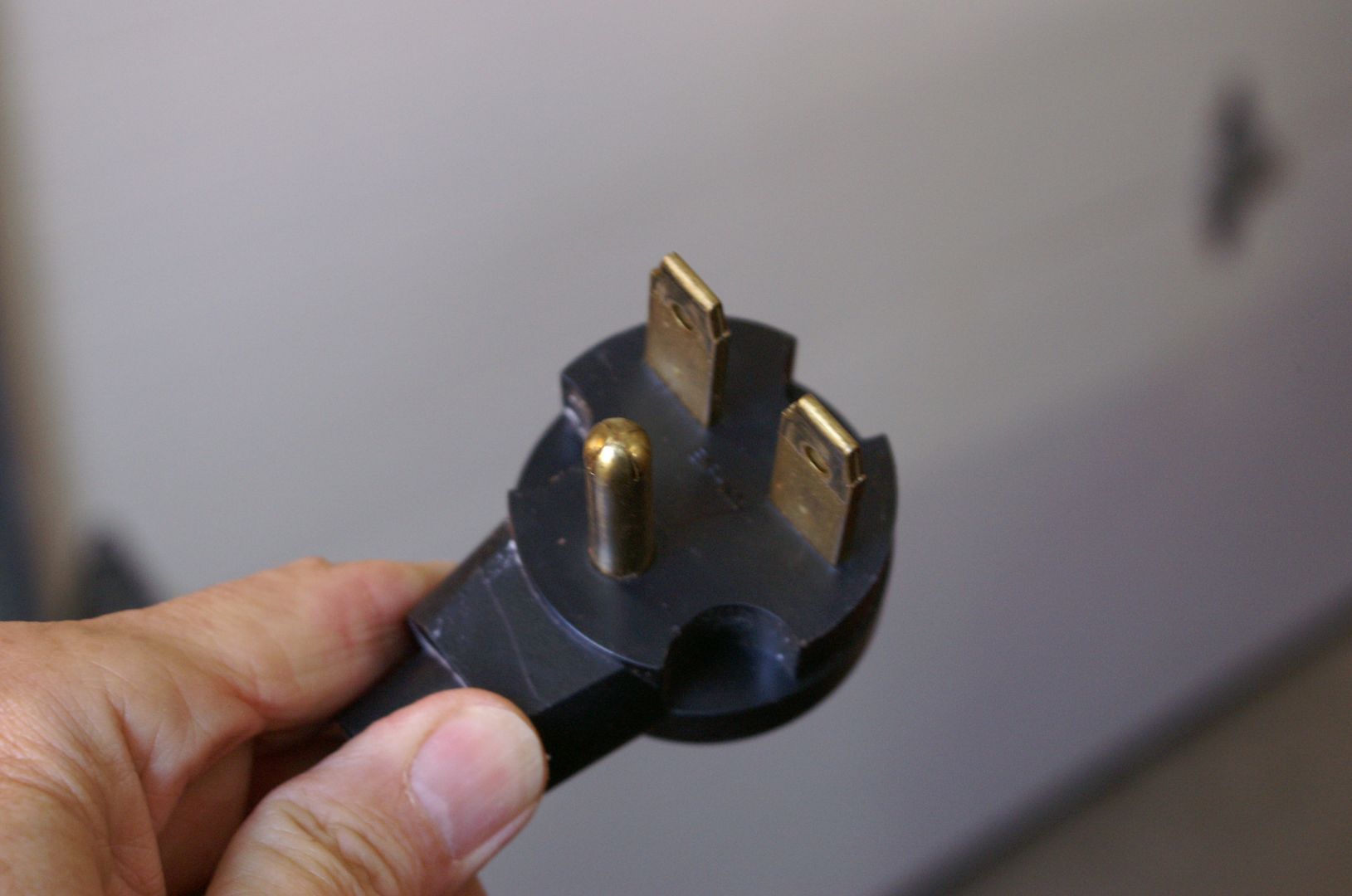
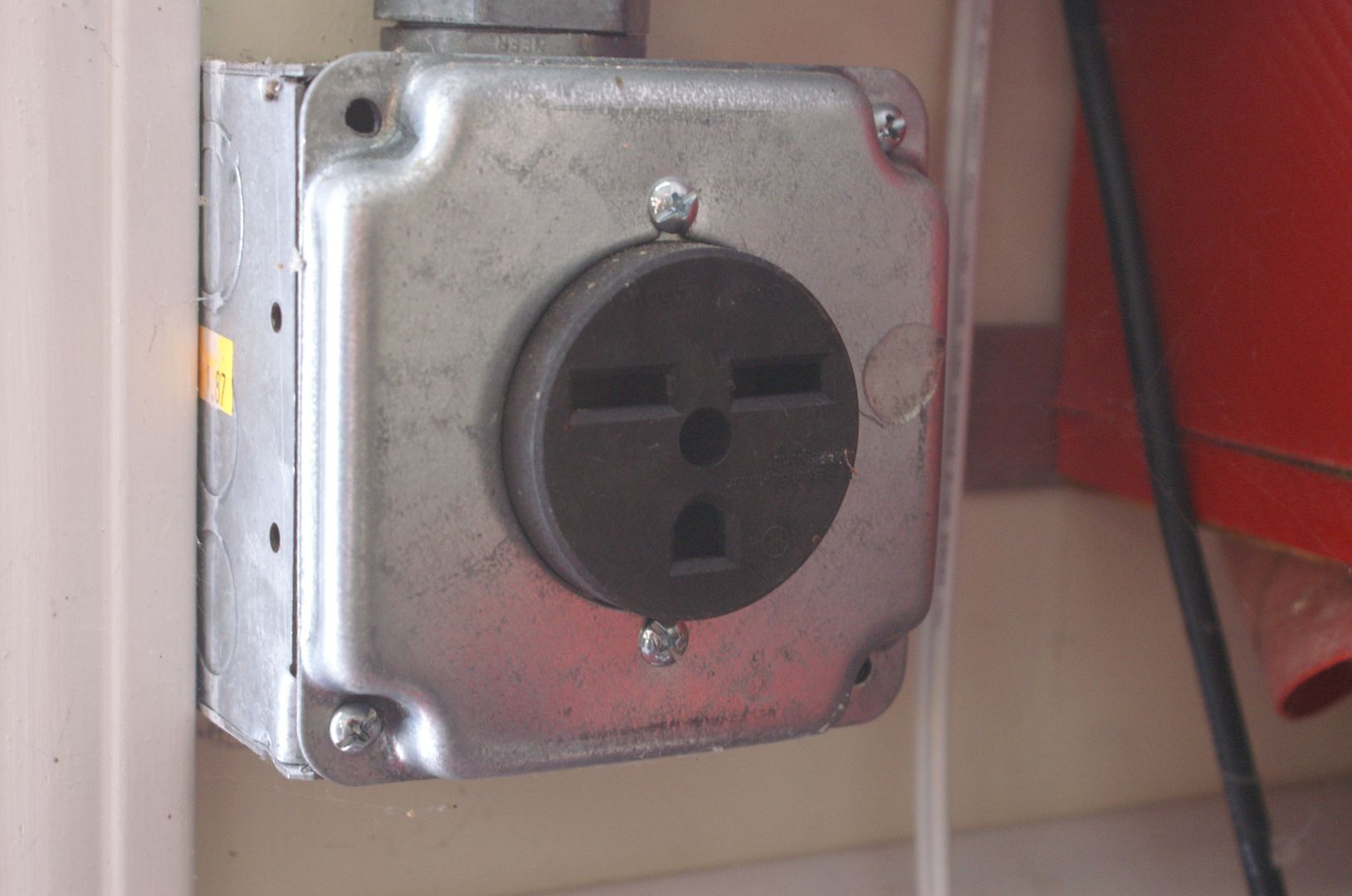
Here's a shot of the back of the unit...(the newer units have wisely placed the control **** at the front...wish I had that feature, but.. )
)
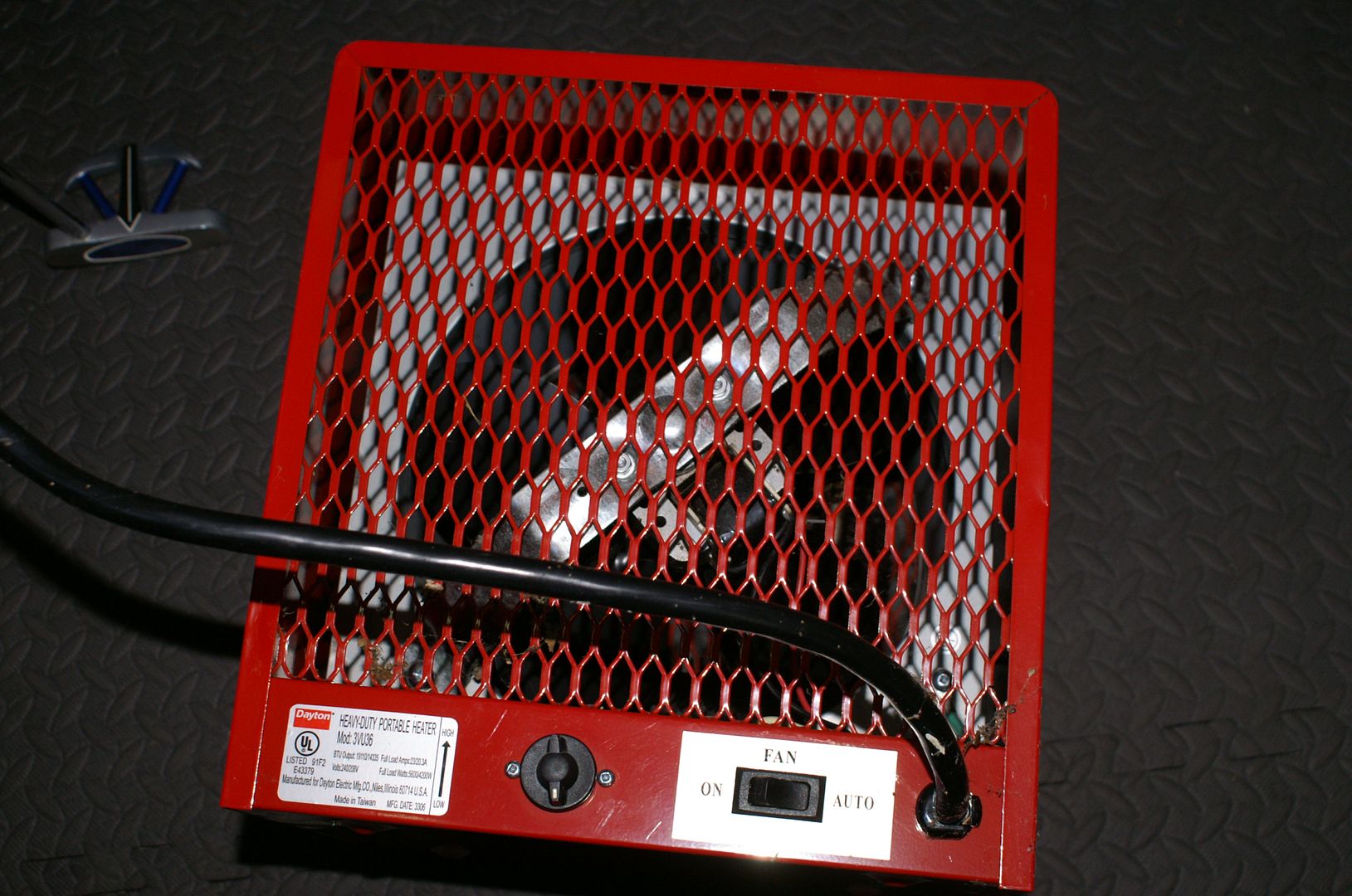
Model # Dayton....
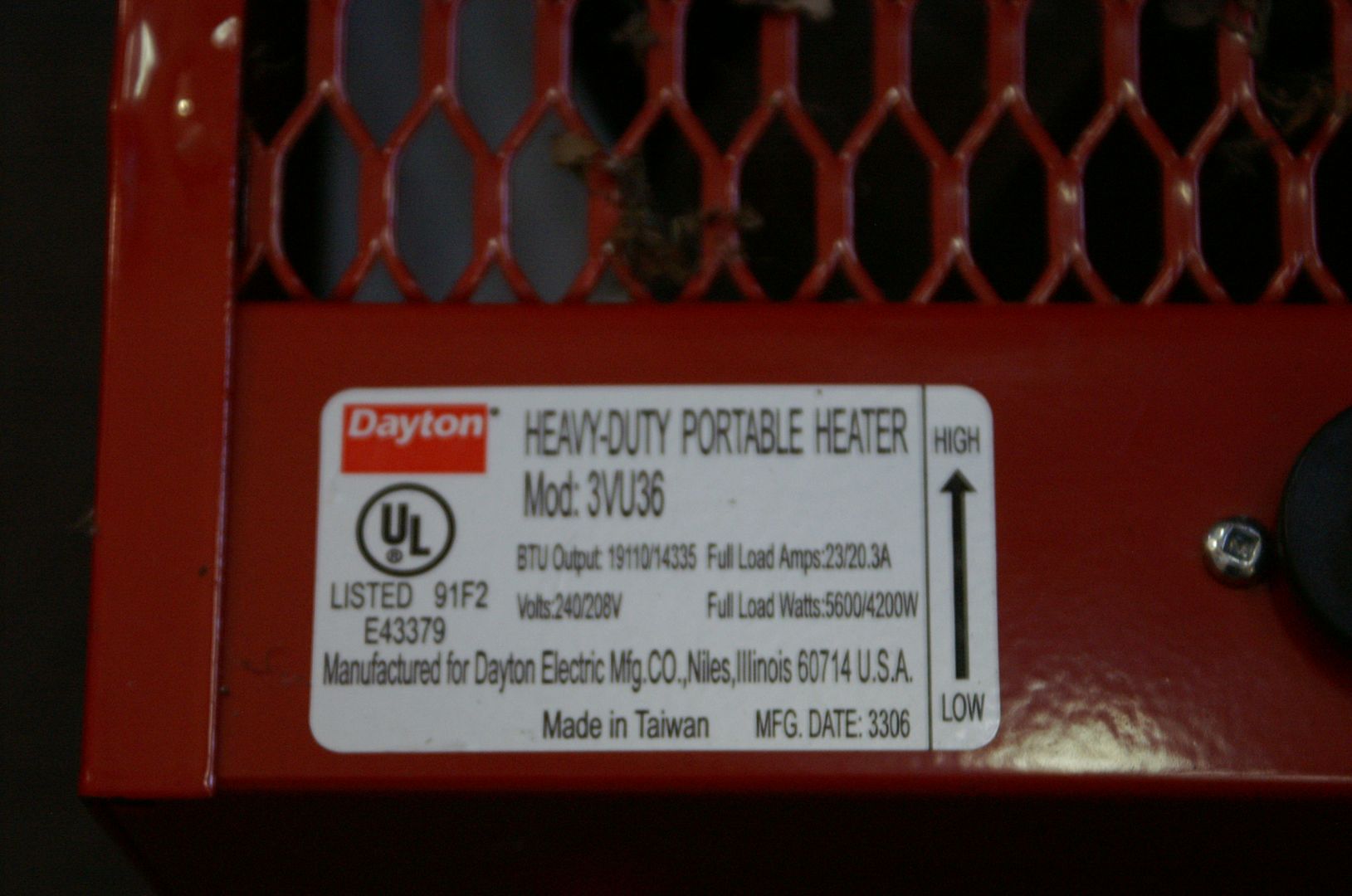
All in all,I am very pleased with how this all turned out. The drilling out of all the holes to run that wire created a ton of chips and dust, and pulling that wire little by little was a real pain.
When I work on the C5 the heater is only about 6 feet away, which is nice. I end up shutting it off after 20 minutes because I get too hot when wrenching on the car.
I think I saved about $1000-1500 Electrician costs by doing it myself, over a week in the summer. Working in the garage attic to run that second line over was a real pain too. I paid around $200 each for the heaters, $85 on ebay for the wire (copper prices pushed 10-2 wire to $135/250' coil at the time), and $16 for the female outlet. The spiral conduit sheathing was free from another job.
Just a little background from a lot of research I did before deciding which heat source to go with. Mainly, I wanted the safest, most cost effective, easy to install heat source. Bottom line, I ended up with electric heaters, two, one at each end of the garage. Here is one of them...note the size is only about a cubic foot...

The beauty of this approach is there is no plumbing in of a 6" vent (I didn't want to cut a big hole in my garage); no fumes, no running out of fuel, no storage of fuel, no leaving a door open while heating, small size, and movable/adjustable. Also, I have the option of running just one heater if that's all I need. Furthermore, these heaters sport a built-in T-stat, and can operate as a cooling fan in the summer. The only real task is installing the 10-2 electrical lines and outlets. Each unit requires a 'home run' back to the electrical box main in the house. A home run is nothing more than a dedicated line from the appliance back to the box...no other devices on the circuit to draw electricity. These are 240v units, and that is what you will need if you want excellent heat output. There little guys put out just under 20000 BTUs each. There are no 110v units out there that can match that output. Thus the need for adding the 10-2 wiring.
Each situation is different, of course, but I can show you a few of the things I had to do to get the wire from the garage to the basement. I used up nearly an entire 250' roll of wire, and it' s very stiff at this gage, meaning hard to pull around corners, etc.
From the far end of the garage (up above the ceiling, then down here to meet the second heater wiring)....

Entering the house below the main floor....

Through the joists, then under an engineered beam, I didn't want to drill a hole in the beam, probably would not have made a difference, but that was my choice. It's the orange wire.

Finally terminating above the box and completing the circuits.

Labeled them East and West circuits...

Larger wire requires huge plugs and sockets:


Here's a shot of the back of the unit...(the newer units have wisely placed the control **** at the front...wish I had that feature, but..
 )
)
Model # Dayton....

All in all,I am very pleased with how this all turned out. The drilling out of all the holes to run that wire created a ton of chips and dust, and pulling that wire little by little was a real pain.
When I work on the C5 the heater is only about 6 feet away, which is nice. I end up shutting it off after 20 minutes because I get too hot when wrenching on the car.
I think I saved about $1000-1500 Electrician costs by doing it myself, over a week in the summer. Working in the garage attic to run that second line over was a real pain too. I paid around $200 each for the heaters, $85 on ebay for the wire (copper prices pushed 10-2 wire to $135/250' coil at the time), and $16 for the female outlet. The spiral conduit sheathing was free from another job.
Last edited by $$$frumnuttin'; 01-05-2013 at 08:53 PM.
#2
Team Owner


Member Since: Jan 2007
Location: cookeville tennessee
Posts: 28,846
Received 1,762 Likes
on
1,529 Posts

Nice post going to look at these now... Robert
#3
Le Mans Master


Very nice.
I like my 240v heater also. I had it easier since my garage already had 240v wired in. My heater is a different brand, but I am pleased with it also.
I like my 240v heater also. I had it easier since my garage already had 240v wired in. My heater is a different brand, but I am pleased with it also.
#6
Melting Slicks


In the house we recently sold in Mission Viejo, CA, we put in a 240V Pool Pump, compared to our previous 120V unit, its was silent, almost zero noise, and used 20% of the energy of the previous noisy unit. Night and Day difference.
#8
Pro


Member Since: May 2011
Location: Boiling Springs Pennsylvania
Posts: 578
Likes: 0
Received 1 Like
on
1 Post
Oldtimer
I use my propane powered convection heater for my 850 sq ft garage workshop. I have a ridge vent and open rafters and no insulation as well as 2 1/3 walls are concrete block so my garage doors are closed. No CO problems.
#9
Administrator

Member Since: Mar 2001
Location: In a parallel universe. Currently own 2014 Stingray Coupe.
Posts: 343,014
Received 19,305 Likes
on
13,977 Posts
C7 of the Year - Modified Finalist 2021
MO Events Coordinator
St. Jude Co-Organizer
St. Jude Donor '03-'04-'05-'06-'07-'08-'09-'10-'11-'12-'13-'14-'15-'16-'17-'18-'19-
'20-'21-'22-'23-'24
NCM Sinkhole Donor
CI 5, 8 & 11 Veteran


Thanks for sharing how you have your garage set up for heat. Looks like a good solution for those cold winter days.
#10
Safety Car


#11
Melting Slicks


This could be an option for me. I have a detached garage with it's own 200 amp service. Only problem/concern for me is electrical cost. My electric co-op gets it's power from TVA which is about as cheap as anywhere in the country. So what's the problem? The TVA which is run by federal government has stipulated that if you have more than one meter you are a commercial user and must pay commercial rates on any meters over one. Since I have a 200 amp service on my house my garage is subject to the commercial rate. It costs me $40.00 a month if I don't even have the lights on.
#12
Melting Slicks


Member Since: Sep 2012
Location: Fort Myers Beach Florida
Posts: 2,014
Received 630 Likes
on
395 Posts

There is no efficient way to heat with electricity, especially in many cold states (New England) where I pay 17 cents/KW at my summer home. Dollar per BTU, you need to be prepared for large bills. Sure they're clean and easy but they stopped putting electric heat in homes up there thirty years ago for a reason. Many folks can't afford it. If money was no object I would have electric heat everywhere myself. In northern enviroments it is better to leave your garage cold. Warm temps with higher humidity promote rust and corrosion. Add a little road salt to equasion and the fun begins. On a quiet night, I could hear my Toyota rust.
#13
No offense intended but I do not like the looks of that loom with jagged edges in pic #4.
I feel a better choice would have been "sealtite". They have nice screw on adapters for a neat and clean installation with no exposed jagged edges. It is all we use at work for small wiring jobs like this and it is easy to work with.
The gray coated is the most popular for dry area applications. A link to some general pics here, lots of variations/choices....
http://www.bing.com/images/search?q=...ing&FORM=IGRE#
I feel a better choice would have been "sealtite". They have nice screw on adapters for a neat and clean installation with no exposed jagged edges. It is all we use at work for small wiring jobs like this and it is easy to work with.
The gray coated is the most popular for dry area applications. A link to some general pics here, lots of variations/choices....
http://www.bing.com/images/search?q=...ing&FORM=IGRE#
Last edited by fishbust; 01-06-2013 at 11:27 AM.
#14
Tech Contributor
Thread Starter
Member Since: Aug 1999
Location: Should this thoughtful, valuable contribution meet with no acknowledgement or 'thanks' this post----
Posts: 16,382
Received 399 Likes
on
257 Posts

No offense intended but I do not like the looks of that loom with jagged edges in pic #4.
I feel a better choice would have been "sealtite". They have nice screw on adapters for a neat and clean installation with no exposed jagged edges. It is all we use at work for small wiring jobs like this and it is easy to work with.
The gray coated is the most popular for dry area applications. A link to some general pics here, lots of variations/choices....
http://www.bing.com/images/search?q=...ing&FORM=IGRE#
I feel a better choice would have been "sealtite". They have nice screw on adapters for a neat and clean installation with no exposed jagged edges. It is all we use at work for small wiring jobs like this and it is easy to work with.
The gray coated is the most popular for dry area applications. A link to some general pics here, lots of variations/choices....
http://www.bing.com/images/search?q=...ing&FORM=IGRE#
 However, it is still safe, even if against code. The idea is to prevent someone from running a nail or screw into the wire when behind drywall,, but since the basement ceiling is exposed common sense tells you it can't happen. I have learned that some things in the code don't make sense at all from a safety point of view. For example, if you wanted to run thicker wire, even though it wasn't necessary (where 14-3 is all that is needed), it is not allowed. Yes, it would cost a ton more in $$$ but it's still a no no. Is it safe? Absolutely. Absurd? yes it is.
However, it is still safe, even if against code. The idea is to prevent someone from running a nail or screw into the wire when behind drywall,, but since the basement ceiling is exposed common sense tells you it can't happen. I have learned that some things in the code don't make sense at all from a safety point of view. For example, if you wanted to run thicker wire, even though it wasn't necessary (where 14-3 is all that is needed), it is not allowed. Yes, it would cost a ton more in $$$ but it's still a no no. Is it safe? Absolutely. Absurd? yes it is.
#15
Tech Contributor
Thread Starter
Member Since: Aug 1999
Location: Should this thoughtful, valuable contribution meet with no acknowledgement or 'thanks' this post----
Posts: 16,382
Received 399 Likes
on
257 Posts

There is no efficient way to heat with electricity, especially in many cold states (New England) where I pay 17 cents/KW at my summer home. Dollar per BTU, you need to be prepared for large bills. Sure they're clean and easy but they stopped putting electric heat in homes up there thirty years ago for a reason. Many folks can't afford it. If money was no object I would have electric heat everywhere myself. In northern enviroments it is better to leave your garage cold. Warm temps with higher humidity promote rust and corrosion. Add a little road salt to equasion and the fun begins. On a quiet night, I could hear my Toyota rust.

#16
 However, it is still safe, even if against code. The idea is to prevent someone from running a nail or screw into the wire when behind drywall,, but since the basement ceiling is exposed common sense tells you it can't happen. I have learned that some things in the code don't make sense at all from a safety point of view. For example, if you wanted to run thicker wire, even though it wasn't necessary (where 14-3 is all that is needed), it is not allowed. Yes, it would cost a ton more in $$$ but it's still a no no. Is it safe? Absolutely. Absurd? yes it is.
However, it is still safe, even if against code. The idea is to prevent someone from running a nail or screw into the wire when behind drywall,, but since the basement ceiling is exposed common sense tells you it can't happen. I have learned that some things in the code don't make sense at all from a safety point of view. For example, if you wanted to run thicker wire, even though it wasn't necessary (where 14-3 is all that is needed), it is not allowed. Yes, it would cost a ton more in $$$ but it's still a no no. Is it safe? Absolutely. Absurd? yes it is.Nice to see a guy can accept some constructive criticism.
No worries.
#17
Tech Contributor
Thread Starter
Member Since: Aug 1999
Location: Should this thoughtful, valuable contribution meet with no acknowledgement or 'thanks' this post----
Posts: 16,382
Received 399 Likes
on
257 Posts

Sorry nuttin, jagged conduit edges and wiring just do not mix! It is something you just do not do. In your words just common sense, nothing about codes, common sense. It would have been better to install nothing there if you didn't want to go through the beam.
Nice to see a guy can accept some constructive criticism.
No worries.
Nice to see a guy can accept some constructive criticism.
No worries.
 I was using what I had on hand
I was using what I had on hand that metal conduit is tough to cut neatly...my fear was if an inspector saw nothing I would have to pull all that wire back out again
that metal conduit is tough to cut neatly...my fear was if an inspector saw nothing I would have to pull all that wire back out again I bet I could slit a piece of what you suggested and switch it out, no?
I bet I could slit a piece of what you suggested and switch it out, no?
#18
The only way around it at this point would be cut it and install a splice box with 'hubs'. Hubs are similar seal tite fittings that screw into the splice box and have plastic bushings on the inside to also protect the wiring from sharp any edges. There is a lot of hardware that makes the difference in how a job turns out. It is a lot easier when you have bins full of choices right in front of you to choose from, as we do at work. An electrical supply store would be able to hook you right up with all the fittings and in the right sizes if you describe to them what you are doing. I hope this helps and as I first stated, no offense intended.

#19
Burning Brakes


They make split insulating bushing the can slip over the wire and slip inside the flex conduit they are normally at all the big box hardware stores there around $.50 each. Get those and that should stop the rough conduit ends comments.
Nice build post
Nice build post
#20
Pro


I just recently installed that exact heater in my 28x32 detached insulated garage. Couldn't beat the price I think I paid $130. Works amazingly well! I live in central Indiana and we see temps as low as single digits at times. Heats the entire garage from 35 to 60 in about half an hour!!! If I let it run higher it would easily get garage to 75 or 80 degrees!! Couldn't be happier with it!

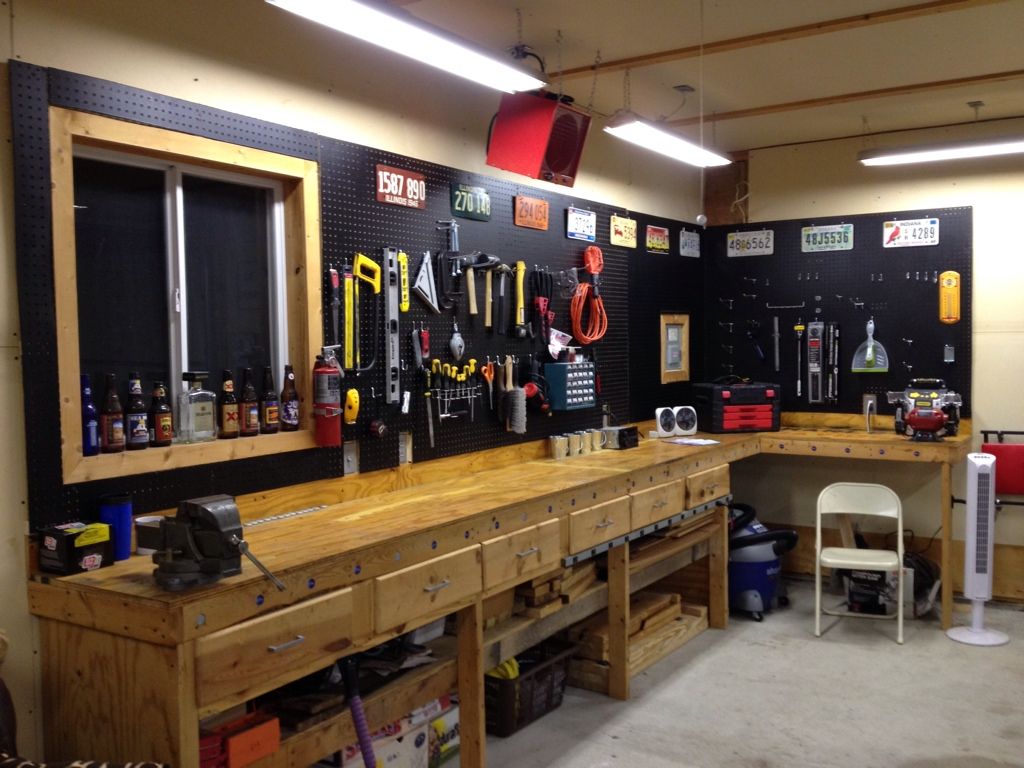
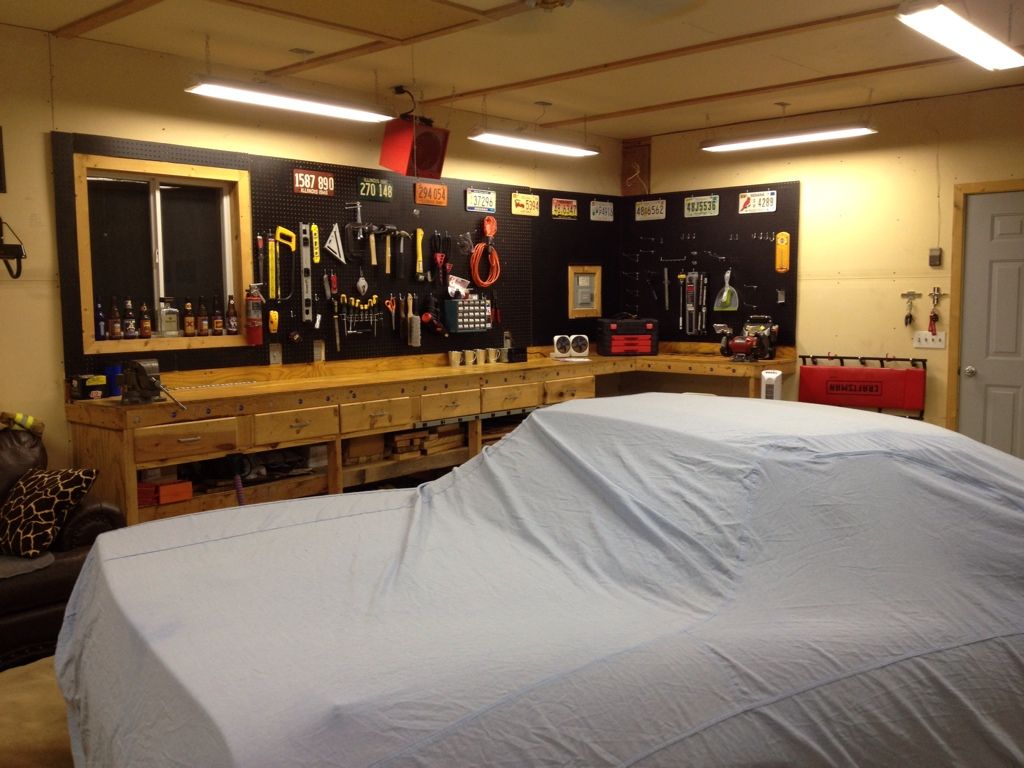
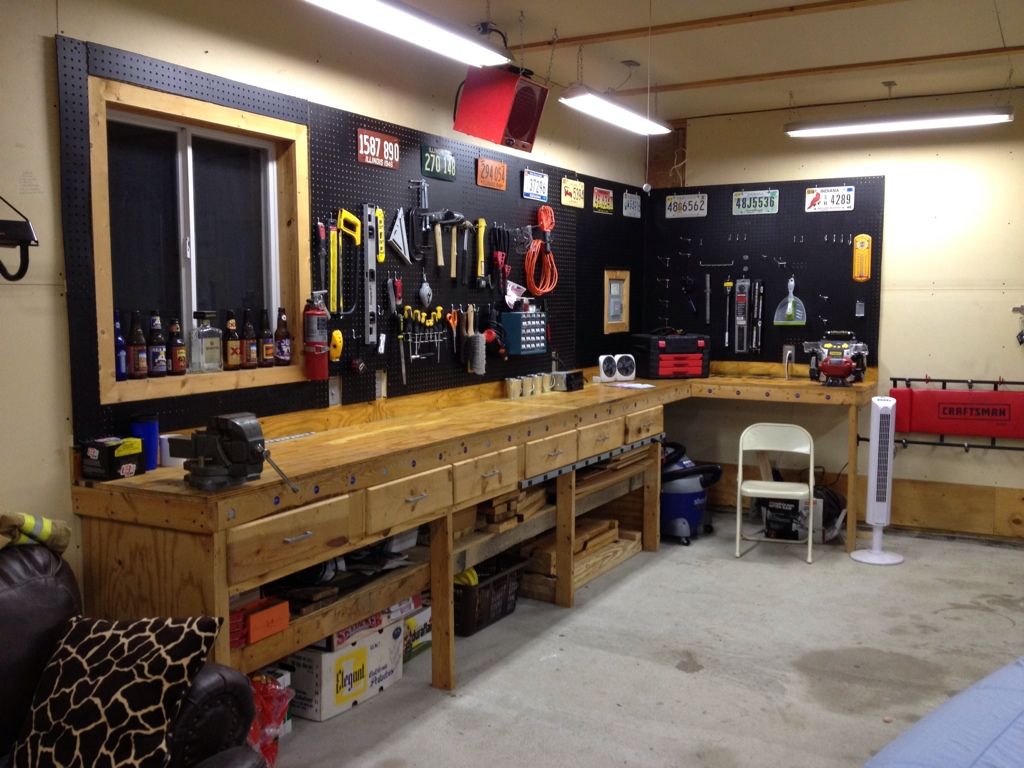
Tyler




Tyler




